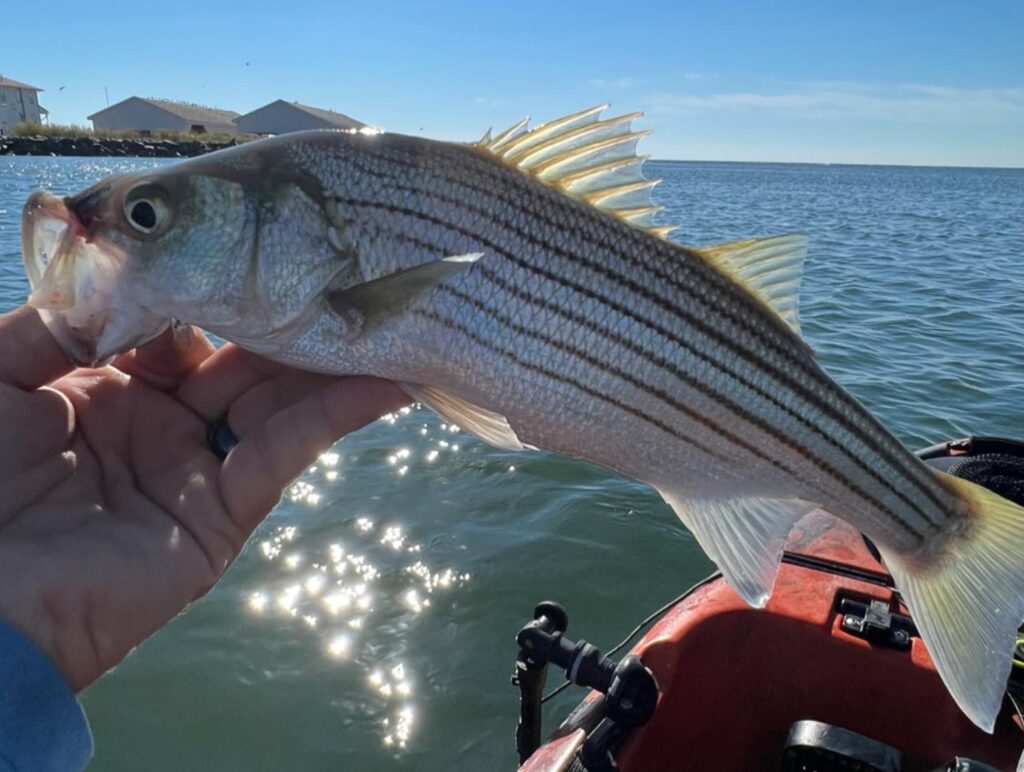Fishing on a Challenging and Changing Chesapeake

By Dennis Doyle
Our fourth big rockfish came over the side only two hours after we had started. The healthy 34-inch fish barely fit into our ice chest and we had to stop and rearrange the contents, removing some water bottles and ice and nestling the four, similar sized beauties together before dumping the ice back in and deciding our next move. Would my friend Mo and I call an early end to the trip or catch some fat white perch to put frosting on our angling cake? Those were truly exciting days.
That trip was just one among many, five or six years ago, in a period that would, unfortunately, longingly, become the Good Old Days. Such is definitely not the case now—the Chesapeake has changed and become far more challenging.
Currently the mid-Bay appears to be empty of our once numerous schools of striped bass; a one fish per person limit is a difficult task, keeper-sized white perch just as rare and even the invasive catfish have become temporarily scarce.
What is going on? It’s hard to say, though there are many suspects lurking about. Algae is again fouling our waters, the result of warming waters and lawn and agricultural fertilizers, some from Maryland but much from southern Pennsylvania coming down the Susquehanna.
Subsequent reduction of the recreational limit from two fish to one and shortening the seasons in Maryland was a good step forward, though a few years late, but allowing full commercial harvests to continue unabated is a peculiarly shortsighted action that will make the fishery’s recovery years longer than necessary.
Adding to these pressures was Virginia’s introduction of blue catfish to the James, York, and Rappahannock rivers during the 1970s and ‘80s in an effort to offer anglers more of a challenge. The state assumed these species would be confined to the fresh waters of the rivers, but this was definitely not the case.
It was not unusual in the early season during the last few years, when baitfishing in the main-stem Bay, to catch as many or more blue catfish than rockfish. Virginia estimated in 2017 that 100 million blue cats had established themselves in the Bay. The overall effect of this explosion of an invasive species on the Chesapeake ecosystem has not yet been determined.
The current overall angling downturn in the mid-Bay may well be temporary as it has happened in the past and essentially where the fish go and why always remains something of a mystery. The fall beckons, however, and that, traditionally, is an energizing time for fish and for anglers. All species become ravenous and eager to feed up for the approaching winter.
Falling temperatures will drive yearling menhaden, perch, spot and minnows schooling out of the tributary shallows moving downstream toward wintering waters and gamefish such as rockfish, bluefish, Spanish mackerel and even catfish move up to feed. This is a traditional and exciting fall pattern and the start of some aggressive and usually rewarding angling.
Hopefully, it will happen again this season, only time will tell.
